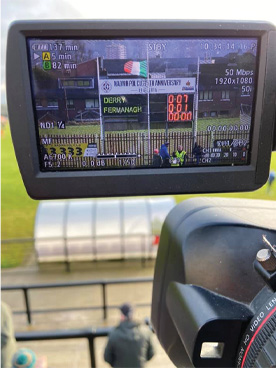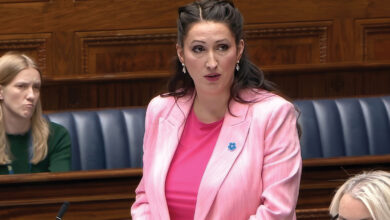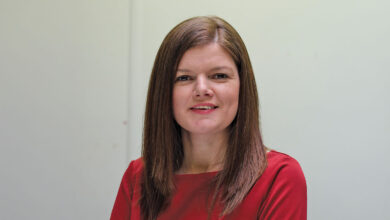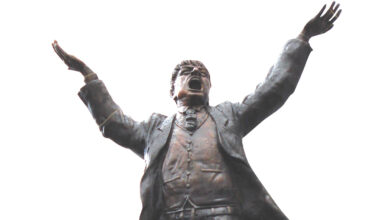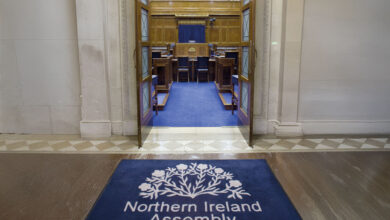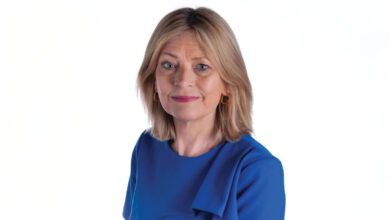Jerome Quinn: Guardian of grassroots Gaelic games coverage
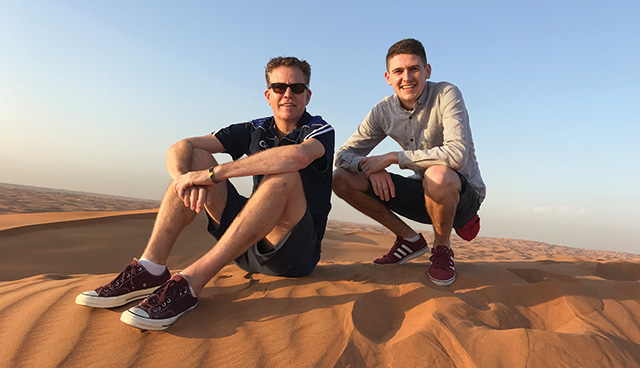
Once the voice and indeed the face of GAA coverage in the North, Jerome Quinn’s acrimonious split with his BBC employers cut short almost two decades of service. In the aftermath, he took a risk, setting off across Ireland and far beyond as a web video journalist. Ciarán Galway speaks with Quinn about his now ubiquitous contribution to grassroots Gaelic games coverage.
Upon joining the BBC in Belfast in 1989, Omagh-native Jerome Quinn worked as a radio producer, becoming the first Catholic in production and presentation. Contextualising his initial foray into broadcasting, the ‘web video man’ recalls: “At that time, [the BBC] was a Protestant-dominated and unionist-by-default place of employment. When it came to sports coverage Gaelic sports were simply avoided unless absolutely necessary.”
Acknowledging that he “had a lot of difficulties there”, Quinn is keen to emphasise the constructive efforts in the early 1990s by then head of sport, Jim Neilly who introduced a ‘Match of the Day’ style programme every Sunday night called ‘The Championship’. Suddenly, the Tyrone man found himself “incredibly useful” and The Championship became an institution to rival The Sunday Game.
Following a brief stint with the BBC in the UK, Quinn’s by then award-winning career was on an upward trajectory. A personal highlight for him was covering the ‘All-Ulster Final’ in 2003 when reigning champions Armagh played Tyrone in the All-Ireland Men’s Senior Football Championship Final. “Everything was good,” he recounts.
In the end, however, relations collapsed under a new head of sport and this was compounded by Quinn’s public criticism of his employer’s perceived lack of dedication to GAA coverage. Speaking of his subsequent split from the BBC, Quinn admits: “For a long time, I held onto a lingering resentment. It’s not that I was egotistical or that I’ve ever missed being on TV, but rather how things unravelled. There were people who did things that I don’t think they should be proud of.”
Origins
However, the former broadcast journalist is adamant in his assertion that the end of his tenure with the BBC was not a setback, rather an opportunity. “I had wanted to get out of the BBC for years. In fact, when I did leave, I simply put my head down, knocked on doors and agitated for work. I went to the Ulster Council [one of the GAA’s four provincial councils] which was very sympathetic. I also went to the Ulster Schools GAA and GAA Higher Education.” Although, at the same time, Quinn willingly concedes: “While I was keen to get out, it was not the way I wanted to go.”
In 2011, the origins of Jerome Quinn Media were humble. Armed with a basic laptop and a camera, he set out to film some footage for his own club – County Down’s Bredagh GAC – at Cherryvale, off south Belfast’s Ravenhill Road.
“On that day, I realised the potential in filming and editing footage, before posting the refined content online where people anywhere in the world could see it. If I filmed in Belfast, people could see it in Australia. Then I had a thought: If I went to Australia, then people at home could see it.
“Although it wasn’t that long ago and it seems a bit obvious now, in this media obsessed world it was a lifetime ago. When I look back on some of the footage, while a bit raw, it was innovative for that era.”
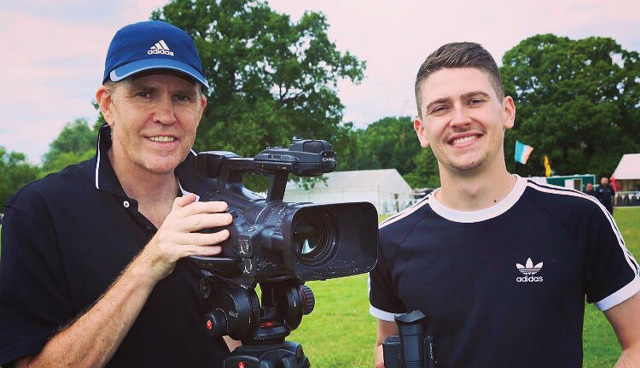
People often imagine that the GAA runs right through my blood. If I still lived in Tyrone it would probably be inescapable. In reality though, it’s my job and I’m passionate about it, but I can also step back from it.
Eager to run with his moment of inspiration, Quinn visited a travel agent and priced a return flight from Ireland to Australia. “In those days, I simply didn’t know the price – for me it was like going to the moon. I was told that it would cost around 1,100 quid. In other words, a real gamble for a freelancer,” he says.
In the end, he took the leap and alongside his son Mark, travelled to Melbourne where he captured footage before posting the first videos online. “Before I knew it, I was getting messages from people in Sydney who asked when I would come and film them. So, the following Sunday I did. After that I went to Brisbane. In total, I travelled for three weeks in Australia, filming and creating content.
“On the back of that, Joe Trolan from Ballinascreen, County Derry but now based in Seoul, South Korea – the then chairperson of the GAA’s Asia County Board – told me he had watched those posts and decided to invite me out. As a result, I’ve covered the annual Asian Gaelic Games event for seven years in a row and have become a regular out there,” he describes.
Building upon this, Quinn dug in, sought out niches and discovered the grassroots across each of the Gaelic sporting codes. “I found, as you do if you understand the GAA or LGFA, that this is as important if not more so than the élite level. It is certainly more rewarding because you can amplify the stories of local ‘heroes’ and Gaels all over the world will love it, because they identify with it. That is exceptionally rewarding.
“To me, there is magic around the St Paul’s tournament [the Ulster Minor Club Football Championship] at Christmas. There is a magic to the Sigerson Cup [the foremost higher education Gaelic football championship]. I mean, where else would you find elite athletes, like Donegal’s Michael Murphy back in 2012, the then All-Ireland winning captain, playing on a student pitch six months later? He kicked this outrageous point and afterwards, I drove back to DCU to edit the footage and post it online. RTÉ used that clip the next night. It’s very gratifying when you capture something like that,” he asserts.
Balance
Quinn, however, concedes that he is probably not exactly the person he is perceived to be. “People often imagine that the GAA runs right through my blood. If I still lived in Tyrone it would probably be inescapable. In reality though, it’s my job and I’m passionate about it, but I can also step back from it. That’s probably good from the perspective of a journalist because it allows me to contextualise it,” he reflects.
“At the end of the day, you have to have balance in your life. I realised that when I went freelance. I worked three years without breathing and then I took a step back and thought, ‘yes, it’s very nice travelling to Kuala Lumpur and Sydney, but then you come back home and you don’t know anybody’. I’ve worked hard over the last four or five years to have a life outside of work.”
Significance
While avoiding hackneyed clichés, the web video journalist characterises Gaelic games as holding unique value, particularly at community level and continues to help out with his local club where possible. Conversely and almost paradoxically, Quinn also maintains that the top flight of the GAA is of little interest to him anymore.
“For years we were broadcasting senior matches and at that time it was everything to me. I couldn’t imagine not being at an Ulster Championship match, but that was then. Now, I don’t know the last time I was at one. Senior men’s football at intercounty level and even at club level is deadly boring. It leaves me cold. Besides, it has also become ‘big business’. The top level can take care of itself,” he asserts.
Where the GAA continues to thrive, he suggests, is at grassroots level. “The GAA is still very pure at [community] level. It lives off passion, family and community. That’s what I enjoy most. When you find people who still want to volunteer their time to make things happen, without any financial incentive. It’s just sheer enthusiasm.
“Even if you took away the corporate side, the sponsors and the Croke Park administration, [the GAA] would continue unhindered at a local level. People would still make games happen, host tournaments and exhibit hunger from underage level upwards. The GAA is not an overnight phenomenon after all.”
Overseas
Indeed, perhaps the most significant contribution that Quinn has made in the freelance era of his career has been to Gaelic games within myriad Irish communities dispersed beyond Ireland, from Sydney to San Francisco and from Kuala Lumpur to Kuwait.
“GAA communities outside of Ireland value the coverage because it showcases what they do and it puts them on the map. Gaels abroad appreciate this because they’re not really getting the publicity anywhere else.
“Overall, the areas that I’ve been best received aren’t even necessarily traditional centres of Irish migration, such as Boston or New York. Across newer destinations, such as San Diego and Houston in the US, or in South East Asia and the Middle East – where more recent waves of Irish people have been drawn – they have a great appreciation. They want to shout about what they’re achieving and showcase their professionalism,” he contends.
The exposure afforded by Quinn’s work demonstrates the skills of the games and the slight adjustments to rules required to play in different climates. It also exposes people to trends that they might not otherwise see. For example, footage of the Asian Games in Kuala Lumpur may be watched by people in Dubai who then incorporate some of the ideas on display.
“It helps the whole overseas GAA community to adopt new ideas and evolve. In San Diego, I first covered the West Coast Sevens tournament five years ago. I’ve been back five times since and it has grown every year. Last year, the tournament was held in the Olympic Park with teams from all North America and Ireland taking part. The media coverage has helped it grow, but the real credit goes to the people on the ground making it happen – in this case an American lady who latched on and is still driving it forward,” he emphasises.
Gold dust
Describing the stories he unearths on his travels as being “like gold dust”, Quinn evokes one such encounter from 2019. “At the Continental Youth Championships [an annual weekend Gaelic games tournament] in the US, there are 2,200 kids all playing Gaelic sports. Some families might drive for a week in order to take part and on every pitch you go to there’s a story. Each Irish person abroad has their own story.
“Last year, I met Conall Harvey from the Delaware County Gaels club in Philadelphia. Conall has lost his legs and four fingers on one hand after being diagnosed with leukaemia via septic shock. Now, however, he plays football on metal legs. This kid is playing Gaelic football.
“I recorded it and was completely astonished. What was absolutely beautiful was the manner in which his teammates, managers, referee and opponents treated him. The referee would blow for a free and the manager would indicate that Conall should take it. It says so much about the GAA and the wider community. What a story.”
Over the last decade, largely due to the economic collapse and the Great Recession, the GAA abroad has evolved beyond anything before. Many young people left Ireland with expertise and brought a professionalism to the organisational structure of Gaelic games in their new homeland. “Irish people have become much more imaginative in their new communities. The standard of competition and skill has also improved. The GAA World Games is an example of that. I’ve been there along the way to magnify the positive stories,” says Quinn.
While the video journalist regularly stumbles across “absolute gems”, it is still necessary to possess creativity. “Personally, I’ve had the opportunity to go to some amazing places. There are times I’ve been invited and then there are times I’ve invited myself. I remember going on a trip to Atlanta and then contacting a friend who lived in the Cayman Islands about a Gaelic tournament there. There are a lot of young Irish guys out there working in finance and so I got in touch and went to watch a training session.
“Then I had a spark of inspiration and decided to get them out of the gym and onto the beach. The following day, a handful of them came along in their business suits with an O’Neills ball. I had them barefooted, walking along the water’s edge with county jerseys over the their shirts, just popping the ball back and forward, first two, then four and then all seven in the shot. A simple enough idea that with a bit of imagination went global. The stories are almost waiting to fall into your lap if you go out and seek them,” he quips.
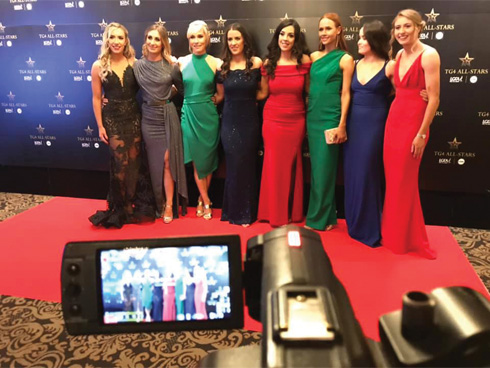
GAA communities outside of Ireland value the coverage because it showcases what they do and it puts them on the map. Gaels abroad appreciate this because they’re not really getting the publicity anywhere else.
Female coverage
At the same time, ladies’ football and camogie, home and away, constitutes a substantial portion of Quinn’s work. Comparing the sense of excitement correlating with the resurgence of ladies’ football and subsequent coverage as being akin to that of the early days of The Championship on the BBC. “It’s new, vibrant and everyone is enthusiastic because it hasn’t been attempted to this extent before. With ladies’ football, it has been a pleasure because they are so appreciative. I feel now that if I went to Croke Park, or grounds across the country and abroad to cover ladies’ football, I am welcomed with open arms,” he states.
Ladies’ football has undergone something of a transformation in the previous and the game, augmented by increased coverage, is growing. For Quinn, who has closely followed and indeed contributed to this growth, Ladies’ football conjures to mind the central values of Gaelic games. “While the LGFA is distinct from the GAA, it encapsulates the genuine hard work, passion and enthusiasm which typifies what Gaelic games are about. The LGFA, which isn’t even based in Croke Park, is a small team led by Helen O’Rourke and does an incredible job.
“It sends a tingle down my spine when I reflect on the journey that ladies’ football and female sporting participation has made. I covered an All-Ireland Senior Ladies’ Football Championship Final in 2012 when Kerry lost out to Cork in front of a crowd of 17,000. At the most recent final, in 2019, 56,000 people attended Croke Park to see Dublin defeat Galway in adverse weather conditions
“It’s absolutely huge now and entirely possible that we will see a day when 82,300 people fill Croke Park for the ladies’ final. It would send such a message out across this island and beyond.”
Negative to positive
Reflecting on his own journey, Quinn is resolute in his belief that personal adversity is something to be faced down. “You have to turn every negative into a positive,” he argues, adding: “I could look back on my time in the BBC and be negative, but in reality, I was very lucky to learn a significant amount about broadcasting, identifying a good story and putting content together. That has stood to me because I’m going abroad now with that knowledge. When I see a story, I know how to tell it.
“If I was starting from scratch 10 years ago there would have been no way that I could have come this far. It provided me with a head start on everyone else.”
Simultaneously though, the freelance journalist details the process of retraining necessary to ensure the continued success of Jerome Quinn Media. “It’s not journalism as I knew it. The old style journalists who trained me on a postgraduate course which was conceived 50 years ago would cringe now at what has happened.
“I have to stay cognisant of what is going to interest people. My son Mark has now come on board with me full time and we made a deal that if I invested in a drone, he would learn to fly it. Now he’s the expert and it really adds to the coverage. Other times we might use a GoPro camera in the goalmouth and capture several angles.
“We’re always looking to stay one step ahead. Although, having been in this game for so long, I’m not hugely ambitious and have got to the stage whereby I’m willing to accept whatever happens. You never know what’s around the corner. Over the years people have advised me to go down the corporate route where there’s more money, but it doesn’t inspire me and you have to go with what inspires you. I think I’ll always follow the excitement, among the grassroots and the places that don’t receive the coverage they deserve. I don’t have any grandiose plans. I’ll just keep doing the best I can,” he concludes.

